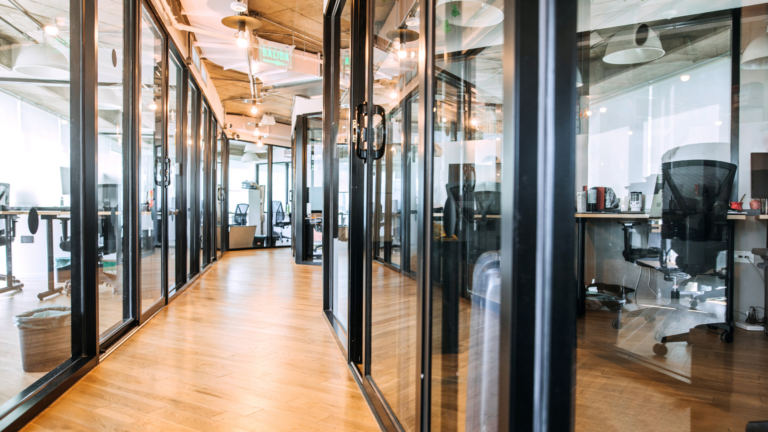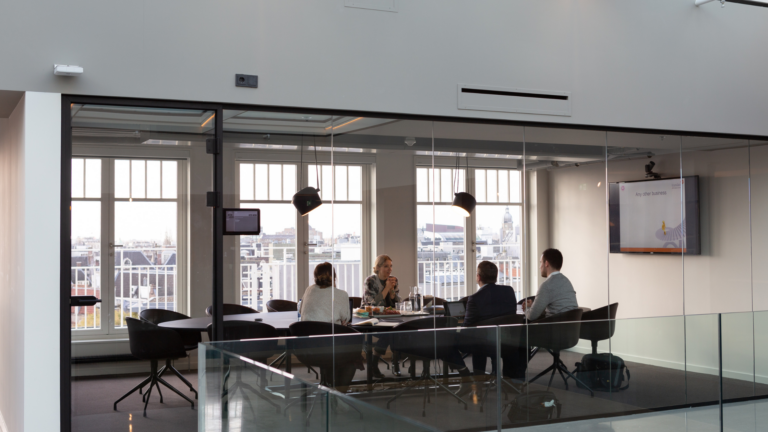For Employers
Hiring
7 Ways to Be a Better Interviewer
If our goal is to attract and hire people with desirable skills and experience, it’s time to rethink interviews. Meeting with top candidates is a lost opportunity if your time is focused on rehashing their resumes and working through a list of tired questions.
When executed with thoughtfulness and care for the individual, an interview can be an opportunity for assessing and getting to know the candidate while also showcasing your people, your culture, and the organization’s vision.
Consider the following scenarios:
Scenario 1
Multi-talented and highly sought-after Jane comes to your organization for an interview. She’s excited, ready to impress, and wants to know if this potential move is right for her. She’s greeted by two people who don’t make eye contact and are intent on getting through their series of STAR questions. They spend most of their time firing off questions and writing down answers. No interaction, conversation, or responses – and definitely no time for Jane’s questions. Jane leaves the interview with no information about the company or culture and strikes them off her list.
Scenario 2
Mike is in the thick of interviewing with three competitive companies that desperately need his rare combination of skills. Company A and Company B take him through a standard interview process. Company C gets creative, because they want to know if Mike is a fit for them, and just as importantly, whether they are a fit for Mike. The first interview is a great conversation where Mike has ample opportunity to ask about the organization. The next week, Mike meets with the person who recently was promoted from the role. Down the road, there’s a lunch and conversation with the team. Throughout this time, Mike is provided with updates, and the team is super-responsive to him. Without hesitation, Mike signs with Company C.
The lesson is obvious: Different interview processes lead to different results. Relying on “the way we’ve always done it” could be causing right-fit professionals to cross you off the consideration list.
Promising candidates should leave interviews enthused and full of possibilities, envisioning themselves working with the people and doing the job. Interviews are about the people sitting on both sides of the table. And, if you’re open to really getting to know your candidates, there might not even be a table.
Fortunately, it’s not all that difficult to approach interviews with thoughtfulness and care. Here are a few ways you can elevate your interviewing skills and improve the overall process to secure top talent:
Don’t Micromanage the Interview
-
Connect on a human level
Make eye contact, be friendly, and use your regular voice. Try to find common ground or a connection, whether it’s a shared interest in dogs, skiing, or even something as simple as a love for sausage rolls. These connections, no matter how big or small, can help break the ice and make the interaction more enjoyable and memorable.
Keep in mind that the person you’re speaking with could potentially become your next team member or colleague. Be yourself, and aim to leave a lasting positive impression. Strive to be the same person you’ll be when they next meet you in the workplace, creating a sense of continuity and trust from the very start. Being genuine and relatable can go a long way in building rapport during the interview process.
Listen to understand
Pay attention to what is being said and to what’s being left unsaid. Non-verbal cues, tone of voice, and the interviewee’s reactions can often convey valuable information that might not be evident in written notes.
By striking a balance between note-taking and attentive listening, you can engage more fully in the conversation and gain a deeper understanding of the candidate, their skillsets and experience. This approach also allows you to maintain better eye contact and a more natural flow of conversation, contributing to a more positive and meaningful exchanges during the interview.
-
Be curious
For example, if a candidate mentions a specific challenge they overcame in a previous role, ask about the strategies they employed or the lessons they learned. If they express a passion for a certain aspect of the job, ask them to elaborate on how that enthusiasm could benefit the team or the organization.
- By digging into these areas, you gain a more comprehensive understanding of the candidate that can help you make a well-informed decision about their suitability for the role and the company. It also demonstrates your thoroughness as an interviewer and your commitment to building a strong and cohesive team.
-
Have a conversation
Candidates shouldn’t walk out feeling like they’ve just been interrogated by the authorities. Use your questions as guides, but don’t let them confine the interaction. Allow for moments of spontaneity and digression. This approach can help candidates relax and showcase their authentic selves, which provides you with a more accurate representation of their qualifications and character.
Remember, interviews are not just about evaluating candidates; they’re also an opportunity for candidates to assess if the company and role align with their aspirations. Fostering a conversational and comfortable atmosphere can make the experience more positive for both parties and contribute to better hiring decisions.
- Discover effective ways to enhance your interviewing skills, much like the comfort of a bathrobe. Master the art of engaging conversations, probing questions, and active listening. Embrace the role with confidence and warmth, creating a relaxed atmosphere for meaningful exchanges. Elevate your interviewing prowess and leave a lasting impression with every interaction.
Get to Know People
After initial screenings and preliminary interviews are done, it’s time to dive deeper with prospective hires and figure out who’s the best fit for this specific opportunity.
During the next steps, find ways to go beyond the resume to explore a candidate’s experiences, skills and aspirations. Consider their technical qualifications along with their cultural fit, enthusiasm, and alignment with the unique aspects of the role and your organization. Sometimes it takes a little extra creativity to help you make more informed decisions about which candidate is the best fit.
Take a walk
Conduct your next interview on a walk, over coffee, or even while running a couple of errands. Observing how candidates interact with others in a more relaxed, real-life context can provide valuable information about their behavior and how they might fit into your team. It also allows you to gauge their adaptability and how well they handle unexpected situations.
This change in environment also fosters a more natural and candid conversation, giving you a better understanding of whether they’re the right fit for your organization and the specific role you’re offering.
Go off script
Standard questions get prepared answers. Allow for a real conversation and be ready to learn things you didn’t know to ask about!
Show and tell
If possible, take candidates on a virtual or physical tour of your workspace. Talking about office dogs is one thing, but giving candidates a chance to meet and interact with little Stanley as he chases his tail is a unique opportunity to let them step into the inner circle of your organization. These personal touches help candidates connect with your workplace culture on a deeper level, fostering a stronger bond and potentially influencing their decision to join your team.
Top talent has options. Don’t let a process get you crossed off their list. Making small adjustments to develop genuine connections with interviewees will improve your chances to getting them to sign on the dotted line.
Need Help Hiring?
Smart, Savvy + Associates is a recruitment agency that specializes in connecting companies with marketing, communications and creative professionals at all levels, from coordinators to C-suite. Based in Vancouver, B.C., our team of marketers-turned-recruiters have an in-depth understanding of the industry and work diligently to find best-in-class talent for each search. Get started today.


